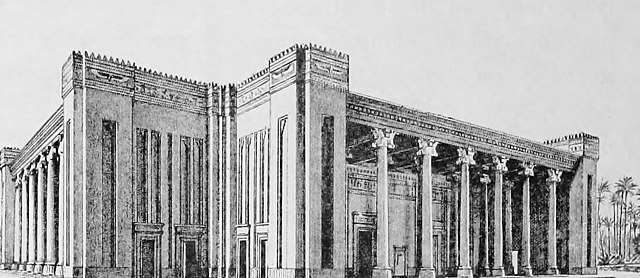Susa: Difference between revisions - Wikipedia
 Article Images
Article Images
Content deleted Content added
Line 170: | image1 = Dynastic list Awan Siwashi Louvre Sb17729.jpg | image2=Awan Kings List Sb 17729 (transcription).jpg | footer=Dynastic list of twelve kings of Awan dynasty and twelve kings of the [[Shimashki Dynasty]], 1800–1600 BC, Susa, [[Louvre Museum]] Sb 17729.<ref>{{cite web |title=Awan King List |url=https://www.louvre.fr/en/oeuvre-notices/dynastic-list-kings-awan-and-simashki |access-date=2 August 2020 |archive-date=3 August 2021 |archive-url=https://web.archive.org/web/20210803163644/https://www.louvre.fr/en/oeuvre-notices/dynastic-list-kings-awan-and-simashki |url-status=dead }}</ref><ref>{{cite journal |last1=SCHEIL |first1=V. |title=Dynasties Élamites d'Awan et de Simaš |journal=Revue d'Assyriologie et d'archéologie orientale |date=1931 |volume=28 |issue=1 |pages=1–46 |jstor=23283945 |issn=0373-6032}}</ref> }} The Old Elamite period began around 2700 BC. Historical records mention the conquest of Elam by [[Enmebaragesi]], the [[Sumer]]ian king of [[Kish (Sumer)|Kish]] in [[Mesopotamia]]. Three dynasties ruled during this period. Twelve kings of each of the first two dynasties, those of [[Awan dynasty|Awan]] (or ''Avan''; c. 2400–2100 BC) and [[Shimashki Dynasty|Simashki]] (c. 2100–1970 BC), are known from a list from Susa dating to the [[First Babylonian dynasty|Old Babylonian period]]. Two Elamite dynasties said to have exercised brief control over parts of Sumer in very early times include Awan and [[Hamazi]]; and likewise, several of the stronger [[Sumer]]ian rulers, such as [[Eannatum]] of [[Lagash]] and [[Lugal-Anne-Mundu|Lugal-anne-mundu]] of [[Adab (city)|Adab]], are recorded as temporarily dominating Elam. | |||